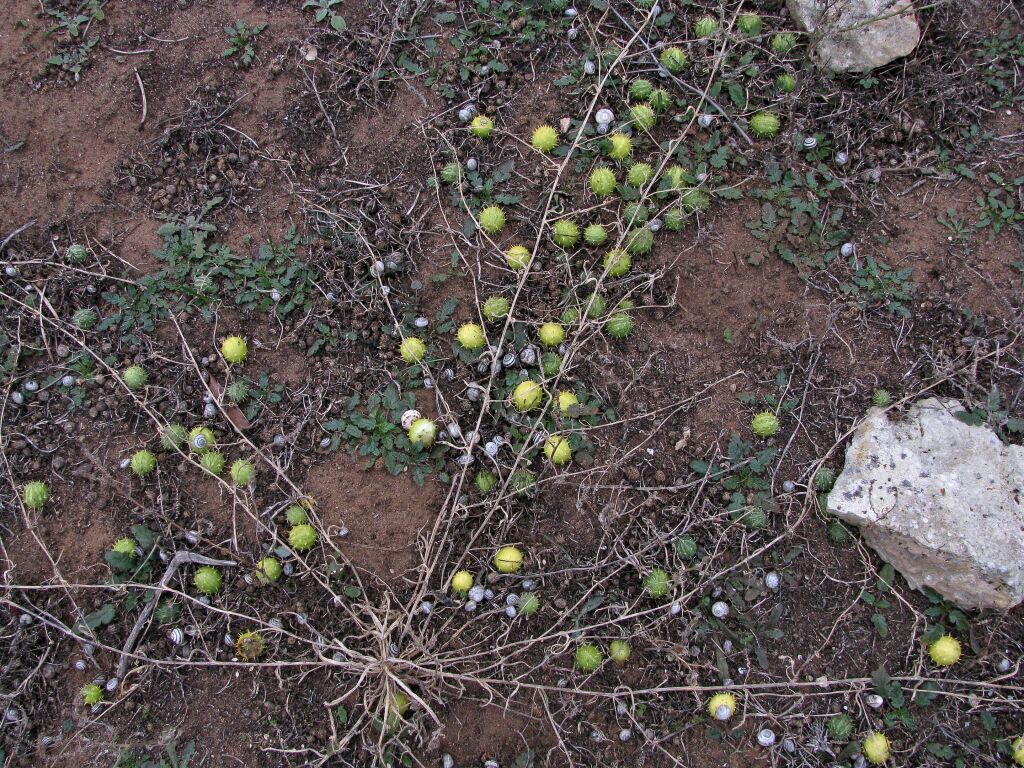Cucurbitaceae
Monoecious or dioecious herbs, sometimes with a woody rootstock, climbing or trailing, scabrous to pubescent, tendrils simple or branched, or occasionally absent. Leaves alternate, palmatifid to pinnatifid. Inflorescence axillary, solitary, in few-flowered clusters or in racemes. Flowers actinomorphic, mostly unisexual. Hypanthium shortly or fully extended beyond the ovary; sepals and petals each 5, free to fused; corolla often rotate, yellow or white. Male flowers with (2–)3(–5) stamens, inserted on the floral tube, alternate with corolla lobes, anthers free or connate, straight, curved or variously contorted, opening by longitudinal slits; disc present or absent. Female flowers with staminodes present or absent; ovary inferior, 1–3-locular, ovules many; style 1, stigmas 1–5, entire or lobed, disc present or absent. Fruit a berry or pepo, fleshy or dry; seeds 1–many, often compressed.
About 120 genera with over 830 species, world-wide, predominantly in tropical and subtropical Africa and Asia; 18 genera and c. 50 species (native and naturalized) in Australia.
A number of genera are commercially cultivated in Victoria including Citrullus (Watermelon), Cucumis (Cucumber) and Cucurbita (Pumpkin and Squash).
Lagenaria siceraria (Molina) Standley (Bottle Gourd) and Cucurbita maxima Lam. (Pumpkins or Marrows) are not regarded as naturalized in Victoria. Lagenaria siceraria can be readily distinguished by the two raised glands near the base of the lamina. It has white flowers, broad-ovate, subtriangular to reniform leaves and a smooth fruit with a hard durable shell when dry. It occasionally occurs near gardens in the warmer northern parts of the State. Cucurbita maxima is a scabrous plant with yellow flowers, orbicular 5-lobed leaves, and usually depressed-globose fruit borne on fleshy pedicels. This species is known to occur on rubbish dumps and along weedy roadsides.
Jobson, P.C. (1996). Cucurbitaceae. In: Walsh, N.G.; Entwisle, T.J., Flora of Victoria Vol. 3, Dicotyledons Winteraceae to Myrtaceae, pp. 379–385. Inkata Press, Melbourne.
 Spinning
Spinning


